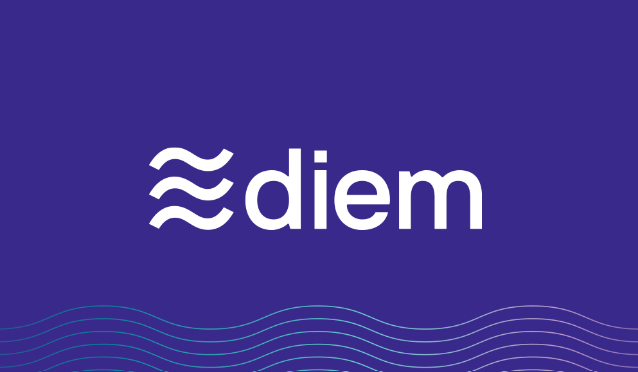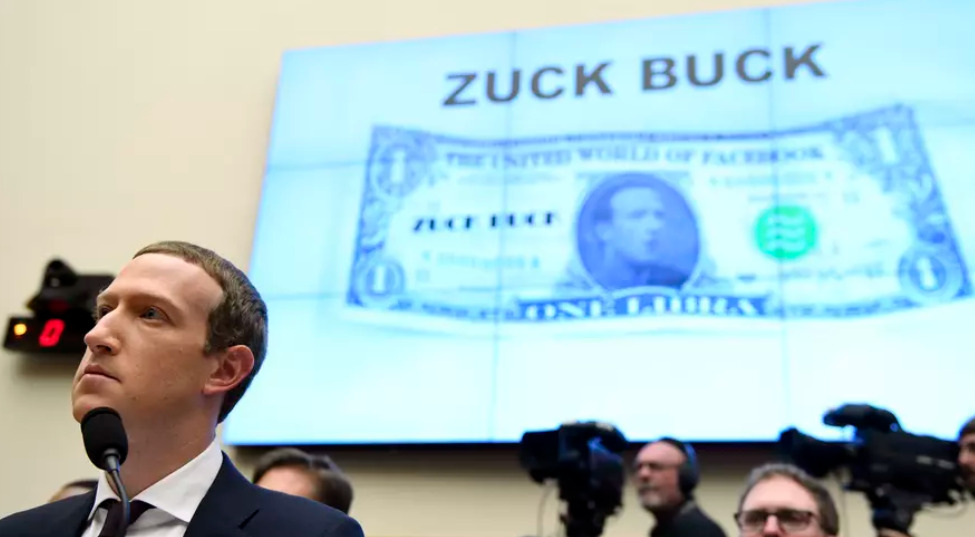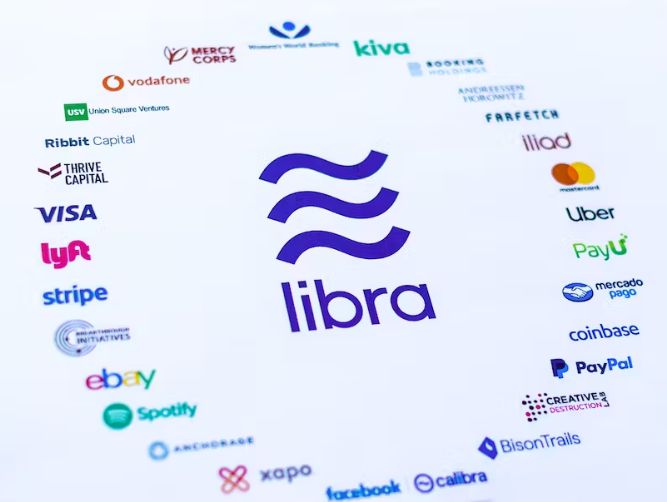
Libra Coin (DIEM) was touted as the next big thing that would shake up the crypto space and bring billions of new users to the world of cryptocurrencies. Instead, Libra was suffocated and squashed before it could officially release anything more than a white paper.
Despite the backing and support from some of the world’s largest companies, Libra Coin was targeted by lawmakers and regulators. What promised to be one of the biggest financial service revolutions since Bitcoin (BTC) and Ethereum (ETH) was ultimately tied down by layers of red tape.
What exactly happened to Libra Coin, or should we say Diem? Why did it never take off?
Sponsored
What can we learn from Libra’s short and turbulent lifespan?
Table of Contents
What Was the Vision for Facebook’s Libra Cryptocurrency?
Picture this: a world where sending money across borders is as easy as sending a text message. A world where billions of people, including those without access to traditional banking systems, can join a global economy as easily as signing up for Facebook or WhatsApp.

Originally, Libra Coin was meant to be a stablecoin pegged to a basket of traditional currencies and governed by a consortium of heavyweight corporations, including household names like Visa and Spotify.
Sponsored
But Libra wasn’t limited to a simple peer-to-peer payment network. Theoretically, the digital asset could be used for retail shopping and business-to-business transactions across a secure and open-source blockchain network.
Why Did Libra Coin Never Launch?
The billion-dollar question. Why did Libra, with all its promise and potential, never see the light of day?
From day one, Libra was met with a wall of skepticism and resistance, not just from the public but from regulators and governments worldwide. The idea of a social media company, already under fire for privacy concerns, controlling a global currency raised more than a few eyebrows.

Regulators in the European Union, the USA, and other countries voiced concerns about monetary sovereignty, financial stability, and privacy. They feared that Libra could undermine national currencies, facilitate money laundering, and give Mark Zuckerberg and Facebook undue influence over the financial system.
In response to this backlash, several key partners, including PayPal and Mastercard, abandoned ship, leaving the Libra project in troubled waters. Despite several attempts to appease regulators, including a rebrand to Diem and a shift in strategy, the project was ultimately shelved.
Libra Coin History
Libra Coin’s story is laced with the drama and volatility you can only find in the crypto market. From the fanfare and excitement of the initial announcement to a rebrand and the eventual shutdown of the project, Libra Coin has certainly left its mark on the industry.
The Birth of the Libra Association
While Meta’s blockchain development began playing with ideas as far back as 2017, the Libra Coin saga didn’t begin until a few years later. Despite a prevailing cryptocurrency bear market, Facebook threw its hat in the crypto ring and announced Libra Coin in 2019. The cryptocurrency project would be led by David Marcus, the company’s Vice President at the time.
The project was ambitious, to say the least, aiming to create a global payment system that would empower billions of people.
Born out of Facebook’s grand vision, the Libra Association was a consortium of companies from various sectors, including payment systems, telecommunication, online marketplaces, and venture capital.
This star-studded lineup was designed to create a decentralized governance structure, with members of the Libra Association having an equal say in the decision-making process. The association was to be based in Geneva, Switzerland, a nod to the country’s reputation for financial stability and strong privacy laws.
The Libra Association was officially announced in June 2019, with an impressive roster of founding members that included heavyweights like Mastercard, PayPal, Visa, Stripe, eBay, Uber, Lyft, and Vodafone.
Diem Rebrand
Despite the wealth of influence and resources, Libra faced regulatory challenges from lawmakers worldwide. In the face of mounting challenges and scrutiny, the Libra Association decided to take a step back, reassess, and come back with a fresh face.
Libra was rebranded as Diem in December 2020, a Latin term meaning “day.” The name change was symbolic, representing a new day and direction for the project. With Stuart Levey taking the reins as CEO, Diem was ready for a renewed and reinvigorated charge.
The Diem Association aimed to distance the project from the controversies that had plagued Libra and present a more compliant and regulator-friendly face to the world. The focus shifted from creating a global currency to developing a digital stablecoin tied to the US dollar.
While a valiant effort was made, the rebrand was not enough to save the project. The regulatory hurdles remained, and the skepticism only grew stronger with time. Despite the new name and direction, Diem, like Libra before it, could not seize the day and become everything it had promised to be.
End of the Road
After years of regulatory battles and public scrutiny, the Diem Association announced it was winding down development in January 2022. But that wasn’t the end of the story.
The Diem Association sold its technology and intellectual property to Silvergate Bank, a California-based financial institution focusing on crypto startups and digital currency. The deal was hailed as a new beginning, a last-gasp chance for the technology developed by the Diem Association to live on.
The optimism was short-lived. 2022 was a brutal year for the cryptocurrency market, with black swan events like the Terra Luna collapse and the FTX insolvency spending crypto prices spiraling into a pit of despair.
Silvergate Bank couldn’t weather the storm and ceased all operations in March 2023 after liquidating its remaining assets.
Who Invested in Libra Coin?
When the Libra project was first announced, it boasted an illustrious lineup of founding members, each expected to invest a significant sum into the project. Outside of the iconic Web 2 companies, crypto venture capitalist firms like Andreessen Horowitz and Coinbase Ventures also lent their support.

These companies saw potential in Libra’s vision of a global payment system and were willing to back it with their resources. But as the regulatory pressure mounted and the challenges became apparent, many of these founding members began doubting their involvement.
One by one, key members began to withdraw from the project. PayPal was the first to walk out, followed by Mastercard, Visa, Stripe, and eBay. By the time the project was rebranded to Diem, many original investors had already left.
Companies like Novi (formerly Calibra, a subsidiary of Facebook that created Diem’s digital wallet), PayU, Farfetch, and others remained part of the Diem Association until its closure.
Were Libra Coin and the Diem Association a Complete Waste of Time?
Ultimately, the Libra Coin story resulted in years of work, months in New York courtrooms, and millions of USD in development costs with nothing to show. Was the Libra Coin and the Diem Association a complete waste of time? Well, it depends on how you look at it.
On the one hand, you could argue that the project was a catastrophic failure. It never launched, faced intense regulatory scrutiny, and ended up being sold off to a bank, only for the bank to collapse just one year later. From this perspective, it might seem like much time, effort, and resources were wasted on a project that never saw the light of day.
But on the other hand, you could argue that the Libra project was a valuable learning experience. It proposed exciting new real-world applications for digital currencies. What’s more, Libra Coin sparked a global conversation about the role of private companies in the financial system. Today, dozens of governments worldwide are actively discussing the deployment of CBDCs (Central Bank Digital Currencies).
Most importantly, the developers at the heart of the Libra blockchain have contributed considerably to the growth of the crypto space. Libra Coin paved the way for the Move programming language, the smart contract-compatible language behind innovative new crypto projects like Aptos (APT).
Pros and Cons of the Libra Coin Saga
Like any good saga, the story of Libra Coin is filled with ups and downs, victories and defeats, pros and cons. Let’s take a moment to reflect on some of these.
Pros
- Blockchain Development Progress – With its considerable resources, Libra Coin developed a new blockchain programming language called Move, which is used in multiple modern networks.
- Public Awareness – Libra Coin brought cryptocurrencies into the mainstream conversation. It forced regulators, governments, and the public to look closely at digital currencies and consider their potential impact on the global financial system.
Cons
- Regulatory Backlash – The Libra project faced intense regulatory scrutiny. This hindered the project’s progress and led to a loss of trust and support from key partners from making future forays into the space.
- Reputation Damage – The controversies surrounding Libra damaged Meta’s reputation, which has only slid further off the back of their unpopular Metaverse development.
- Failure to Launch – Despite the significant resources invested in the project, Libra never launched. It could be argued that this represents a significant time, effort, and money loss.
On the Flipside
- Much of the backlash toward Libra Coin was due to its connection to Facebook, which faced privacy concerns and investigations at the time.
Why This Matters
As cryptocurrency becomes more widely accepted, seeing how the general public would react to a social media-based cryptocurrency would be interesting. Just a few years after the scrutiny Libra faced, people are excited and eager to see Dogecoin (DOGE) integrated into X, Elon Musk’s rebranded Twitter.
FAQs
No, Libra Coin (DIEM) was never officially launched on public markets and is unavailable to buy.
After years of development, constant regulatory struggles, and a full rebrand, Libra Coin (DIEM) ceased operations in 2022.
Libra Coin was the proposed cryptocurrency developed by Meta that would provide an affordable global payments system using blockchain technology.
